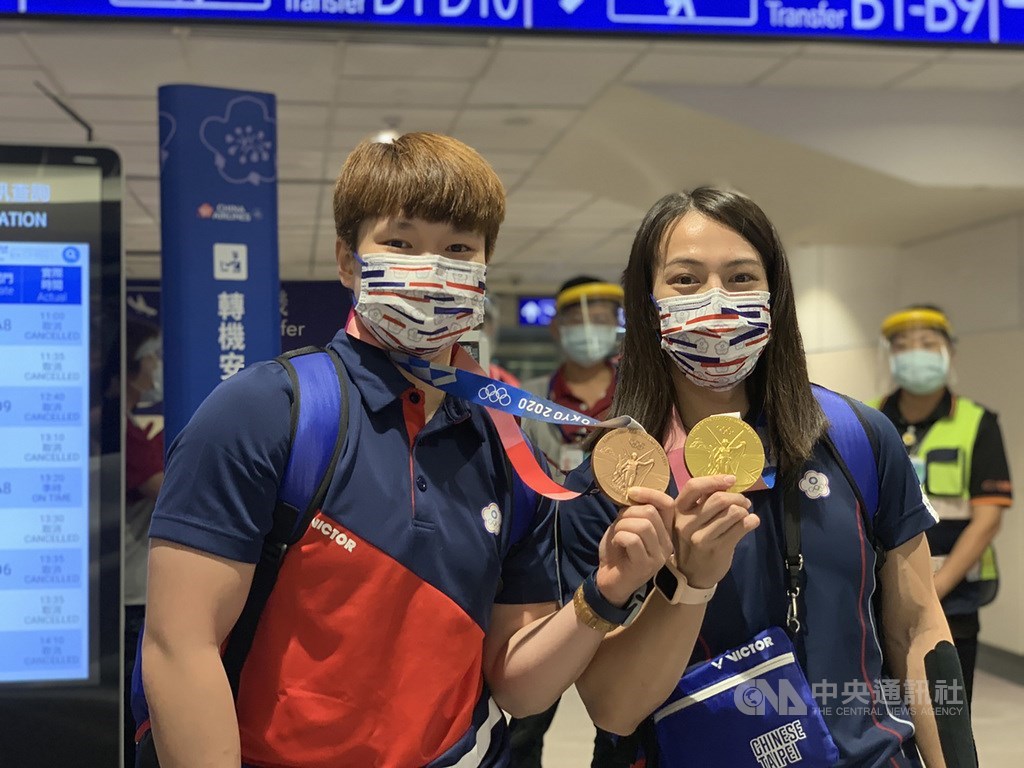Blue Magpies, plum blossoms highlighted in Taiwan kimono for Tokyo Olympics project
 ]
]
【看CP學英文】日本為了迎接2020東京奧運,可說是傾盡全國之力,而民間也於2014年發起了「和服計畫」,目標為替共207個奧運代表團創造獨一無二的和服設計,中華台北隊的和服也在去年三月亮相,而設計中更是融入了鮮明的臺灣元素。
As Japan was preparing for the 2020 Tokyo Olympics in previous years, the whole nation rallied behind officials to help make it a memorable event.
In 2014, a local company decided to launch the “Kimono Project” with the aim of creating unique kimonos for each of the 207 Olympic teams.
The kimono for the Chinese Taipei (Taiwan) team debuted in March last year, and the Taiwanese elements are conspicuous in the design.
此項計畫是由日本當地民間團體「Imagine OneWorld」所發起,目的在於以和平與和諧為號召,讓全世界在2020年東京奧運團結一致。此計畫由日本各地130多位和服設計師合作,而歷時六年的創作過程終於在2020年完成所有作品。
The project was launched by the Japanese local non-governmental organization Imagine OneWorld in the hope of “uniting the world in peace and harmony in Tokyo 2020.”
The project was a collaboration between 130 kimono artisans from all around Japan and lasted six years to finally materialize in 2020.
針對每個代表團,和服、腰帶、配件合計平均耗資200萬日圓(約51萬元新台幣),全部資金皆是經由企業以及個人捐助,金額從1000日圓至超過300萬日圓(約新台幣255元至76.4萬元)不等,所有人員也都是以志工身分參與。
For each team, a set of kimonos that includes an obi (sash) and accessories takes about ¥2,000,000 (about NT$510,000) on average to produce.
The fund was crowdsourced with corporations and individuals donating from ¥1,000 to ¥3,000,000 (around NT$255 to NT$764,868), and the entire project consisted of volunteers as opposed to paid individuals.
設計團隊著手製作每一套和服之前,皆會與該國大使館或代表處共同討論設計,並參考當地文化、歷史、自然、建築、國旗、國徽等等元素,將其融入設計當中。
As artisans embarked on the design process, they first consulted with embassies and representatives offices of nations and derived inspirations from culture, history, nature, architecture, national flag, and national emblem. Later on, they integrated these elements into their design.
中華台北代表團的和服由Hiromi Yabana製作,腰帶則是由西村織物株式會社負責。此套和服以黃色為底色,再以我國特有種台灣藍鵲以及國花梅花點綴。
The kimono for Chines Taipei was designed and created by Hiromi Yabana, and the obi by Nishimura Orimono Co., Ltd.
The designer adopted yellow as the base color and embellished the kimono with Taiwan Blue Magpies, a Taiwanese endemic species, and Taiwan’s floral emblem — the plum blossoms.
中華奧林匹克委員會就指出,和服採用梅花,「具有榮耀及國家意象」,而台灣藍鵲則是展現了「團結、敏捷、堅毅強悍」。
The Chinese Taipei Olympic Committee indicated that the plum blossoms on the kimono represent “honor and the nation” and that the Taiwan Blue Magpies portray solidarity, agility, and perseverance.
計畫目標起初希望能在2020東京奧運開幕式,向全世界展示此次華麗成果,因故無法如願,然而,各國民眾仍然可以透過網路欣賞日本為各國設計的獨特和服。
Despite the fact that the project originally targeted to showcase the result in the Opening Ceremony of the 2020 Tokyo Olympics, the attempt was unsuccessful.
Fortunately, people from around the world can still appreciate the splendid kimonos that Japan has presented for every team.
Envoy to Spain explains why ‘Chinese Taipei’ athletes hail from Taiwan
 ]
]
Taiwanese badminton players Lee Yang and Wang Chi-lin with their gold medals at the Tokyo Olympics. Taiwanese badminton players Lee Yang and Wang Chi-lin with their gold medals at the Tokyo Olympics. (CNA photo)
TAIPEI (Taiwan News) — Taiwan’s representative in Spain, Jose Maria Liu (劉德立), has written a letter to the Spanish media to explain that athletes winning medals at the Tokyo Olympics under the name of “Chinese Taipei” actually represented Taiwan, reports said Friday (Aug. 13).
Due to pressure from China, Taiwan is not allowed to use its own name, fly its own flag, or play its national anthem during medal ceremonies at the Olympics. The island nation’s stellar performance in Tokyo, where it won an unprecedented 12 medals, has attracted attention from global media.
Writing to Spanish newspaper ABC, Liu said that no matter how hard one looks, a country called “Chinese Taipei” is nowhere to be found on a world map, CNA reported. He pointed out that the nation’s medal winners have been popular both at home and internationally.
However, Liu added that the international community needs to be reminded the athletes come from Taiwan, which has been forced to accept the name “Chinese Taipei” under an agreement made four decades ago. During the Tokyo games, Spanish news website El Confidencial also mentioned how only athletes from Taiwan, Russia, and the refugee team were unable to hear their own national anthems.
For Taiwanese athletes, Tokyo Olympics their best ever
 ]
]